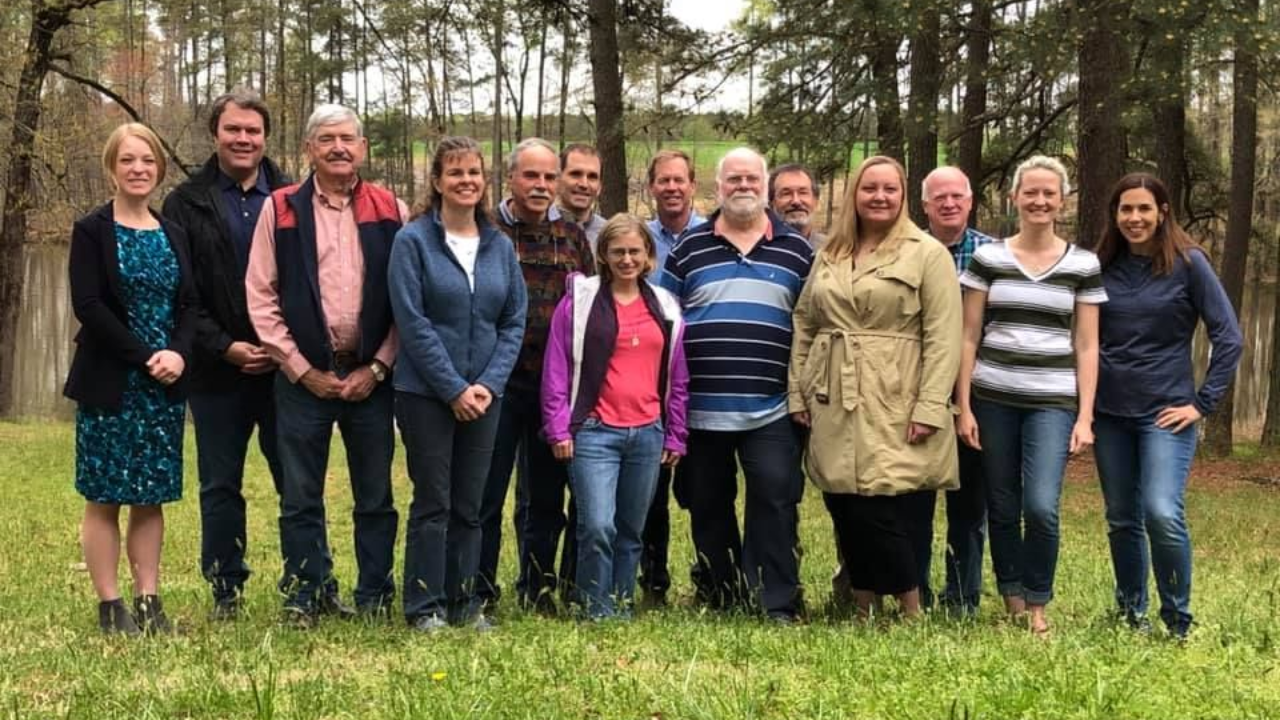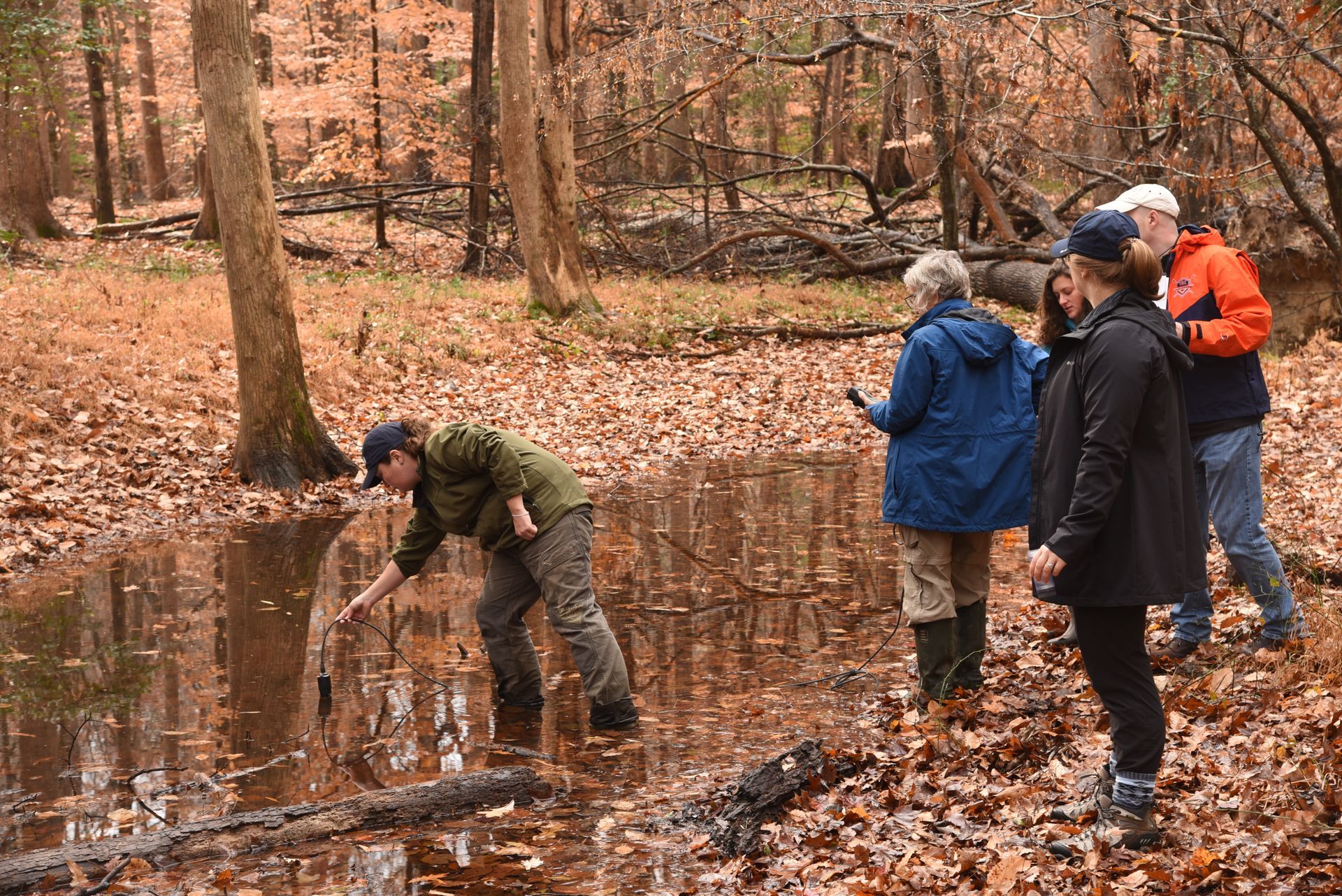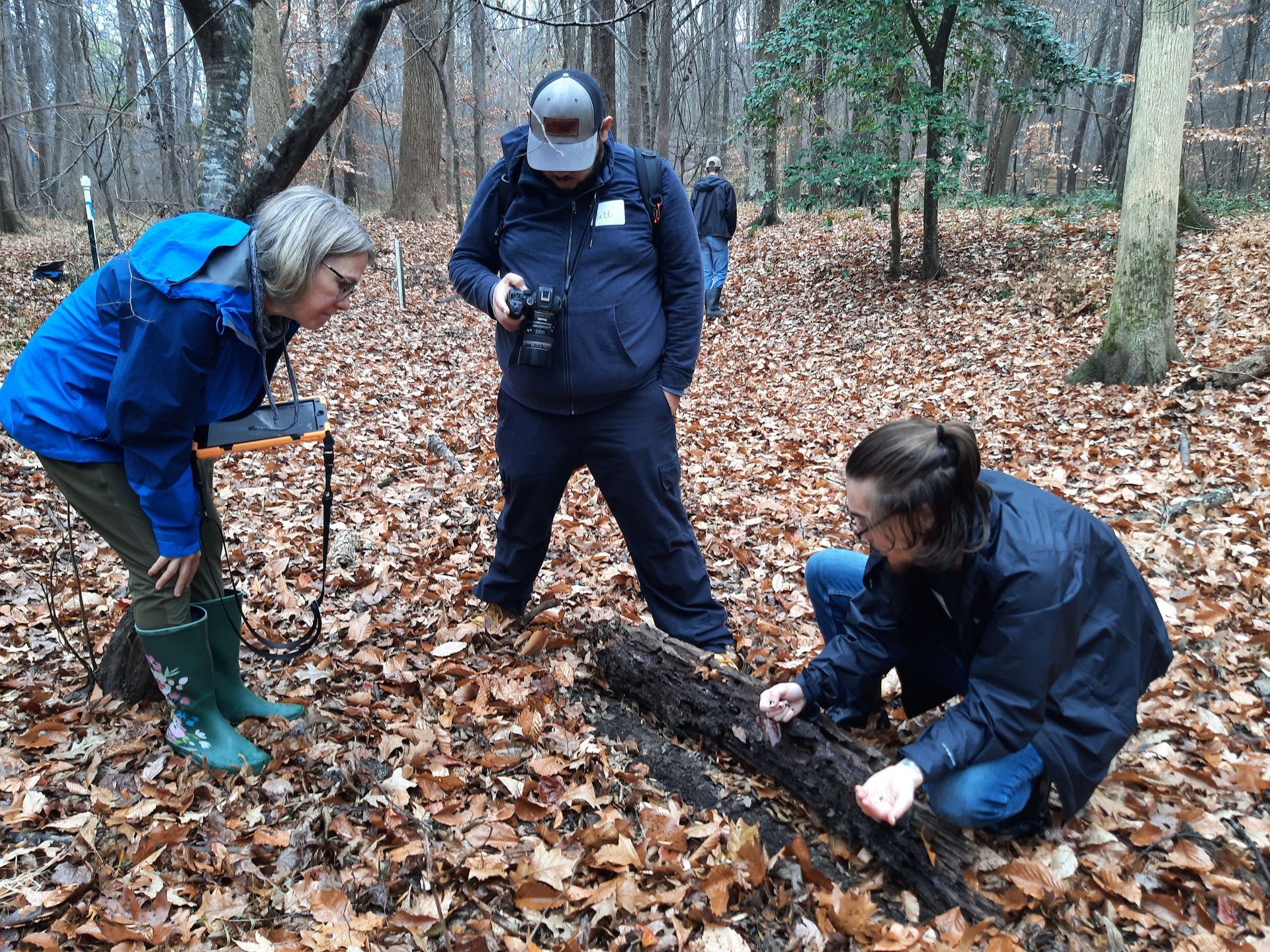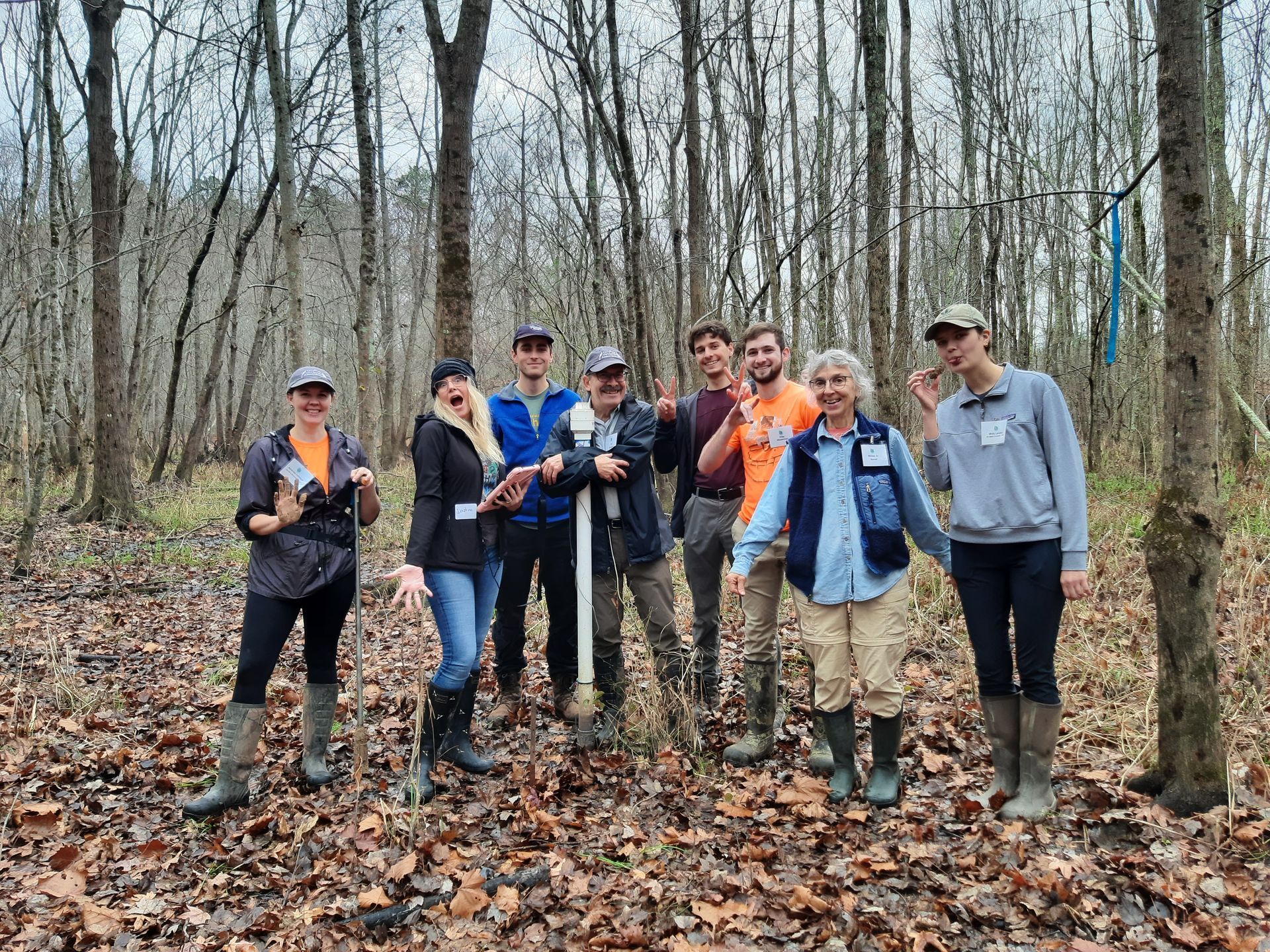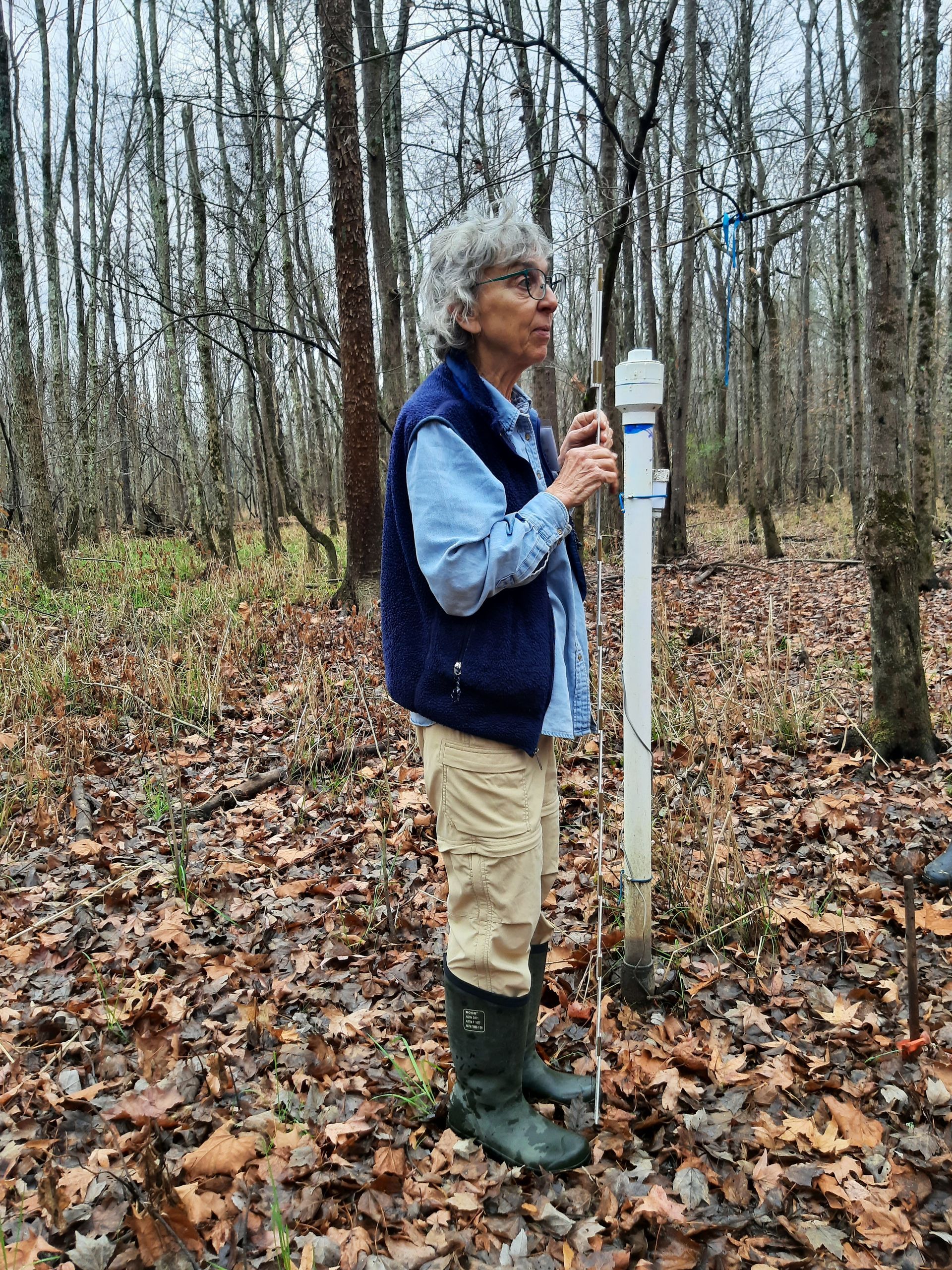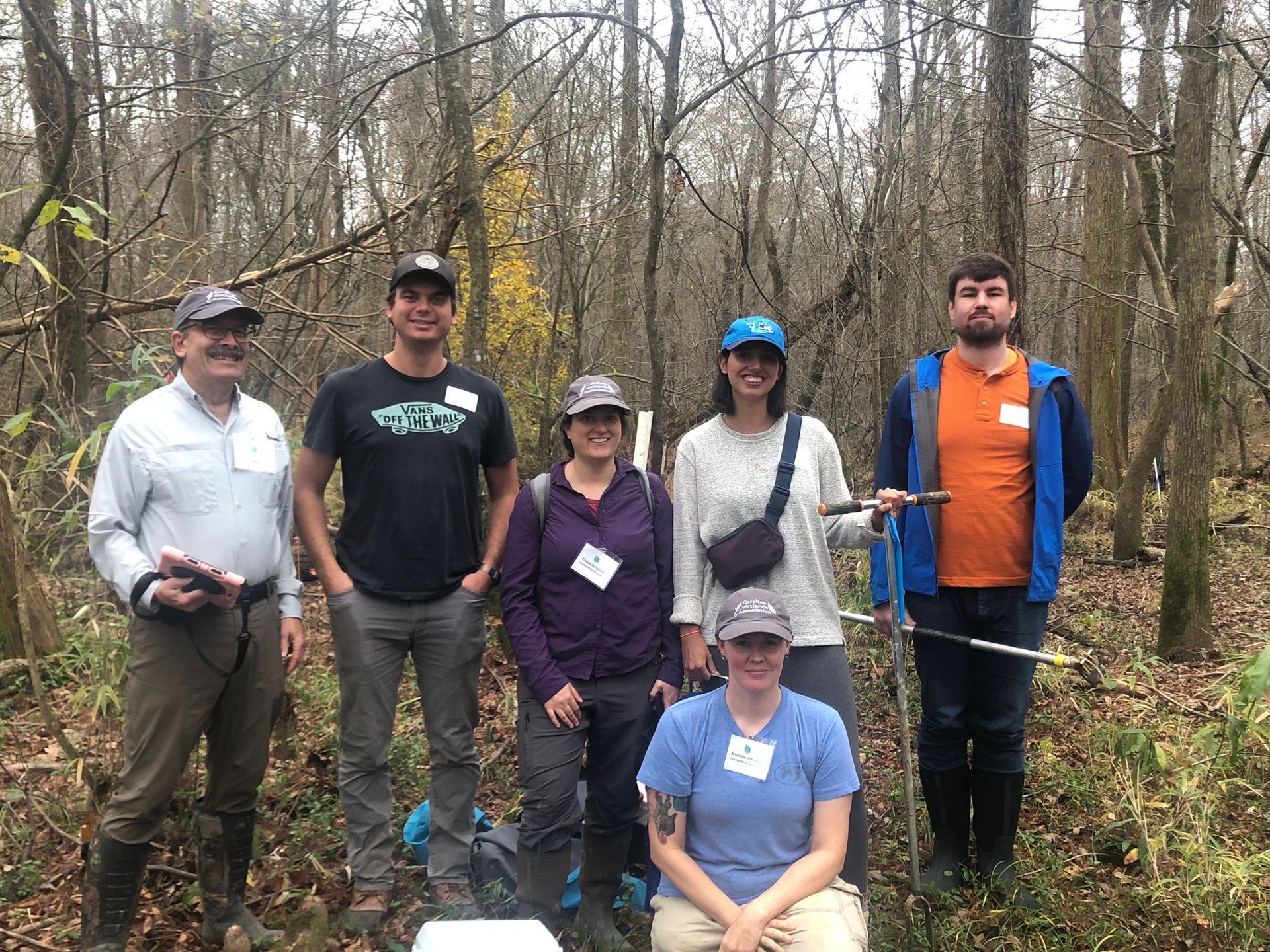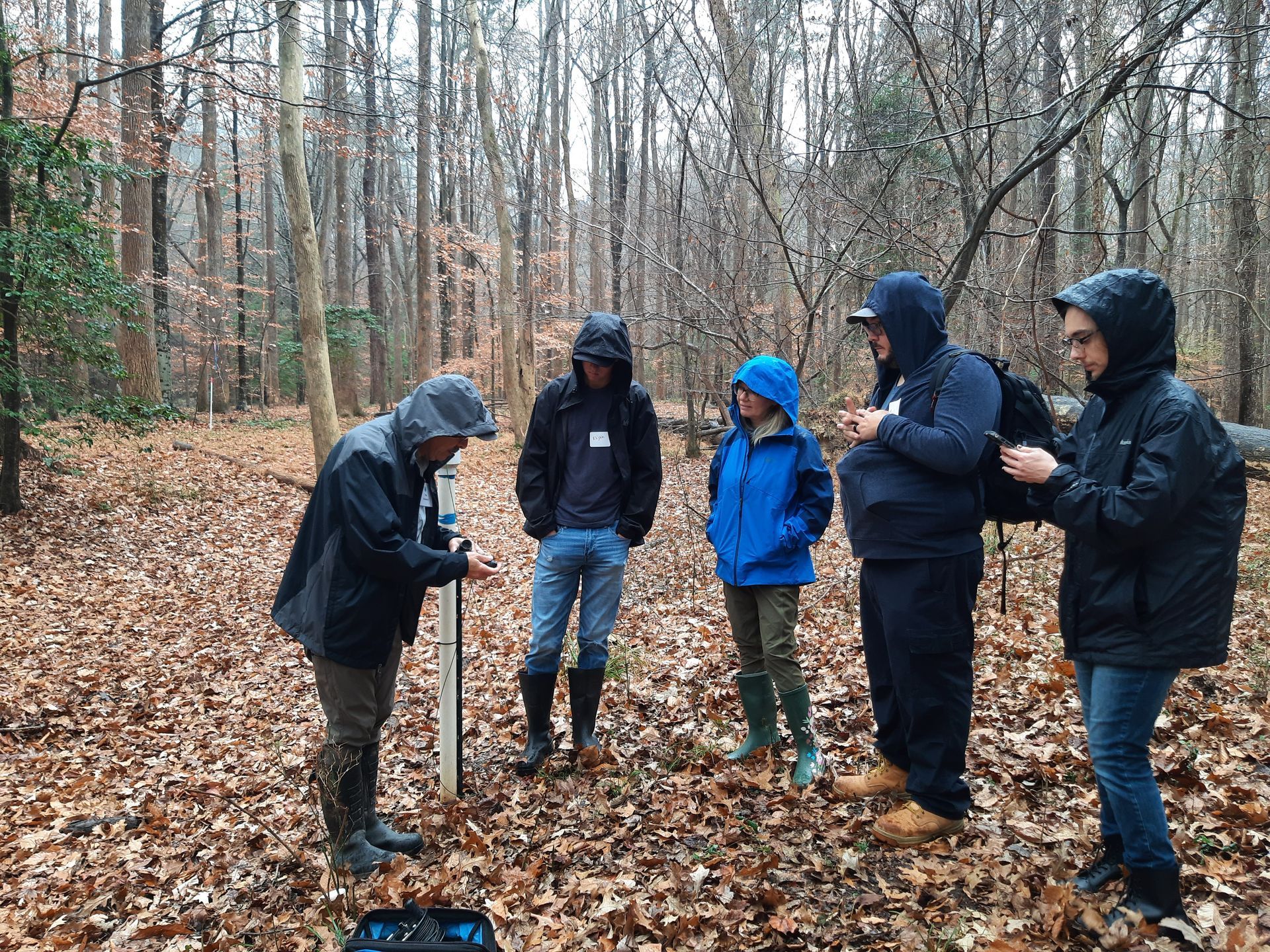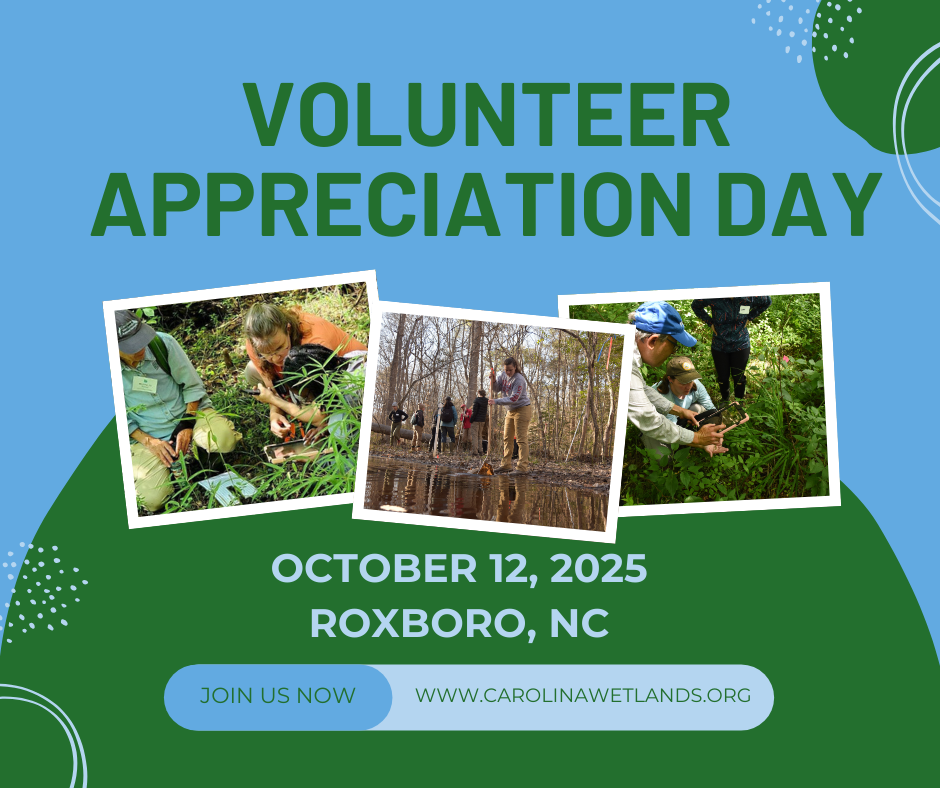December 2023 Monitoring Showed that Wetlands Don't Always Look Wet!
We always try to emphasize to our volunteers that wetlands do not always look wet! Despite the rain, this was clear in our most recent round of monitoring.
With the recent end of the growing season at our sites and the
abnormally dry weather this Fall, our sites were looking drier than usual. Particularly at Hemlock Bluffs Nature Preserve, where water levels in our monitoring wells were at or below our sensor levels, over 5 feet below ground. Both of the pools where we normally take water samples were completely dry. This marks the second monitoring event for which we were not able to take any water quality samples at Hemlock Bluffs. Hopefully, we will get more rain soon!
At Mason Farm Biological Reserve, water levels were much closer to the surface, although there was no standing water at our staff gauge. Last December, we had water over much of the surface at these sites.
At Roberston Millpond Preserve, water levels were also below the surface at our wells, but were less than 6 inches below the surface. Despite dry conditions, we were able to see evidence of previous periods of inundation, such as moss trim lines and crayfish burrows.
In addition to monitoring water, we also looked at our wetland soils. We looked at wetland soils and their adjacent upland soils to discuss the differences between the two. Wetland (hydric) soils can be one of the most useful characteristics for identifying the location of a wetland. During dry times in a wetland or in winter when vegetation is sparse and hard to identify, we can always look at the soil.
It takes a long time to develop wetland soils and a long time for them change. This is why we do not need to make records of our soils annually. However, it also makes them a fairly stable indicator of long periods of saturation. Wetland soils tend to have dark surface layers and grey profiles, with presence of redox concentrations (small pockets of red or orange). Upland (non-wetland) soils tend to be brown, red, orange, or yellow. You can learn more about why this happens and the soils at our sites in last December’s summary.
City skyline
Thanks to
Tom Schwarcz,
Mickey Jo Sorrell, and
Leigh Aultman for leading our hydrology and water quality monitoring this December!
And thanks to all of our volunteers, new and returning who helped to make this monitoring event successful!
Our project team is working on plans for next year. Keep a look out for more monitoring opportunities and a recap of our monitoring data thus far! Until then, we hope you have a wonderful holiday season and a safe and happy new year!
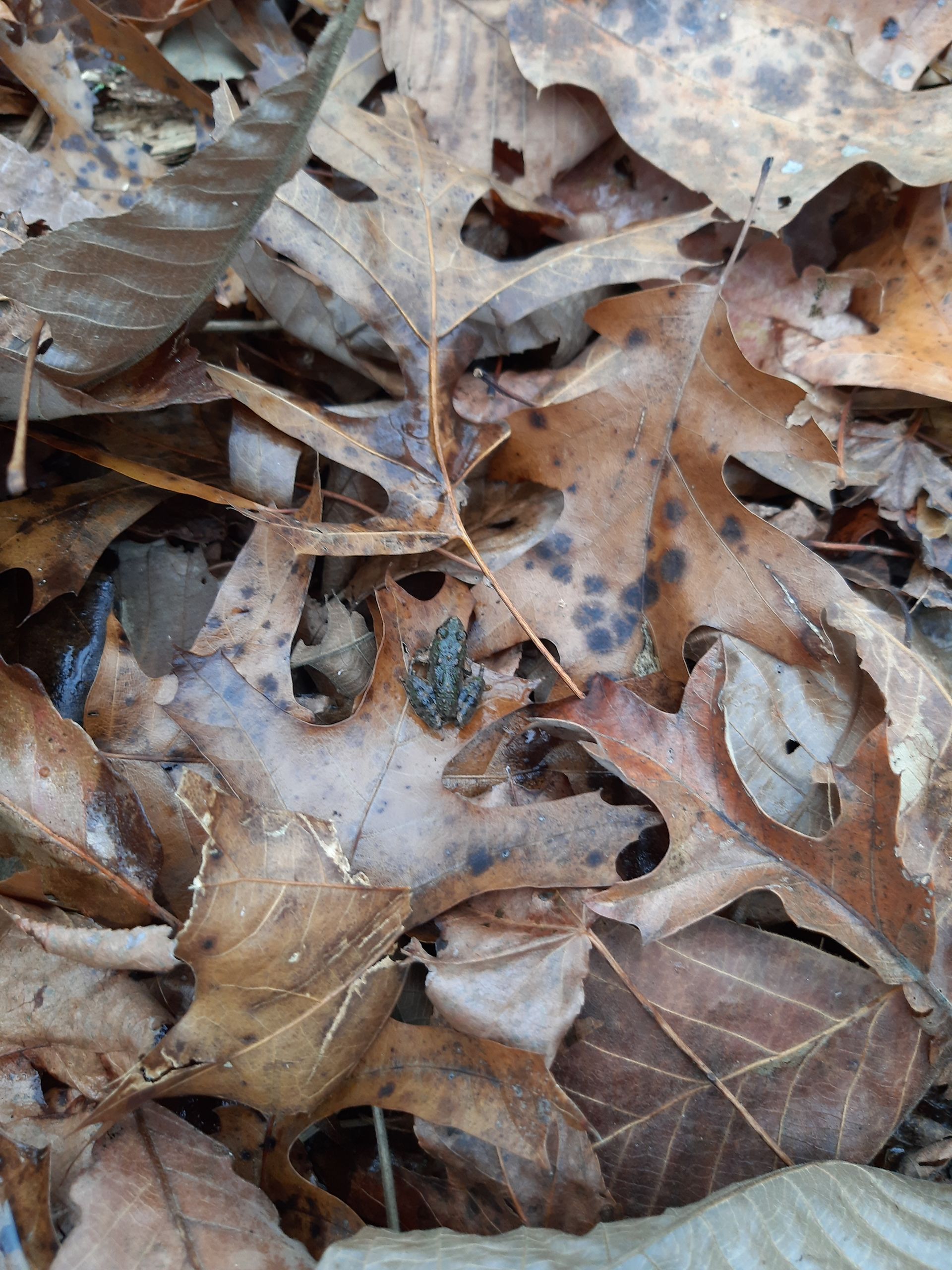
You might also like
